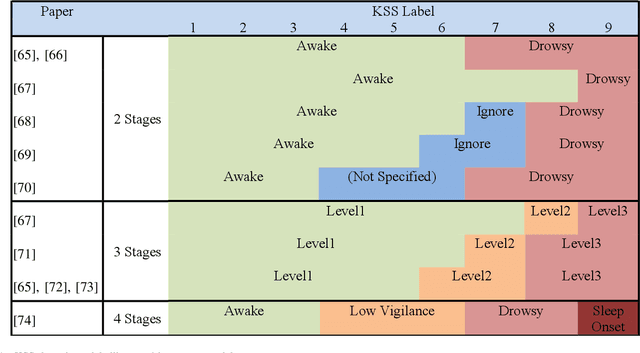Challenges of Driver Drowsiness Prediction: The Remaining Steps to Implementation
Paper and Code
Sep 17, 2021



Driver drowsiness has caused a large number of serious injuries and deaths on public roads and incurred billions of taxpayer dollars in costs. Hence, monitoring of drowsiness is critical to reduce this burden on society. This paper surveys the broad range of solutions proposed to address the challenges of driver drowsiness, and identifies the key steps required for successful implementation. Although some commercial products already exist, with vehicle-based methods most commonly implemented by automotive manufacturers, these systems may not have the level of accuracy required to properly predict and monitor drowsiness. State-of-the-art models use physiological, behavioural and vehicle-based methods to detect drowsiness, with hybrid methods emerging as a superior approach. Current setbacks to implementing these methods include late detection, intrusiveness and subject diversity. In particular, physiological monitoring methods such as Electroencephalography (EEG) are intrusive to drivers; while behavioural monitoring is least robust, affected by external factors such as lighting, as well as being subject to privacy concerns. Drowsiness detection models are often developed and validated based on subjective measures, with the Karolinska Sleepiness Scale being the most popular. Subjective and incoherent labelling of drowsiness, lack of on road data and inconsistent protocols for data collection are among other challenges to be addressed to progress drowsiness detection for reliable on-road use.
 Add to Chrome
Add to Chrome Add to Firefox
Add to Firefox Add to Edge
Add to Edge